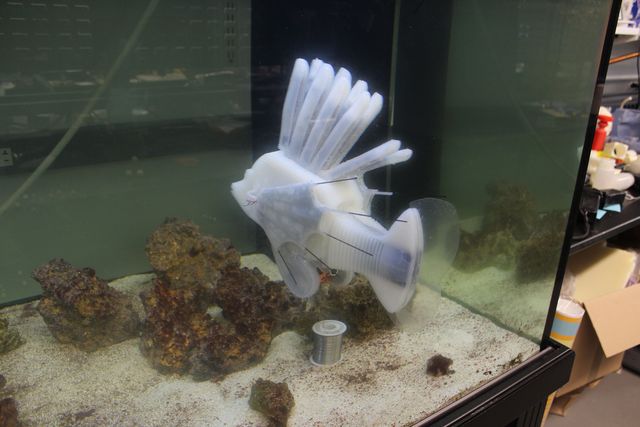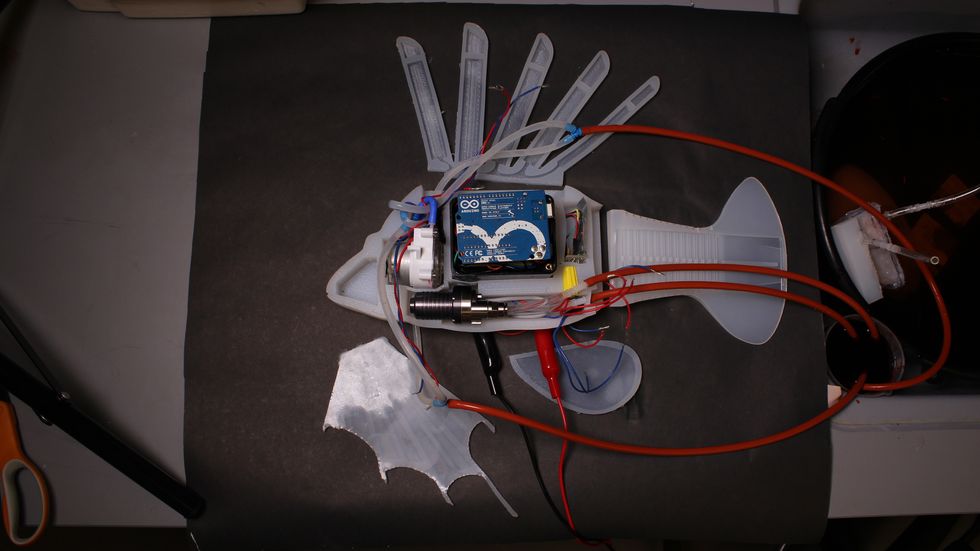- Researchers have created an aquatic robot powered by "blood" that runs through its body, similar to a human's vascular system.
- The team based its design on the biology of humans and birds.
- This tech may provide robots with more autonomy and run time between charges in the future.
Researchers at Cornell University have engineered a robotic fish that's powered by a circulatory system that runs on "blood." Before you get squeamish, we can confirm the robot isn't filled with actual blood, but rather, a battery in liquid form that moves through the bot's circulatory system.
For as advanced as modern robots are, they still lack the "multifunctional interconnected systems found in living organisms," the researchers write in their study, published in Nature, and thus can't reproduce their efficiency and autonomy. So the team looked at all the way bots stored their power and worked to reinvent the factors that eliminated efficiency and autonomy: size, weight, and design.
The scientists examined those constraints in the context of "multifunctional, bio-inspired applications," they write. It's how they ultimately arrived at an "energy-dense, circulatory system embedded in an untethered, aquatic soft robot."
The team, led by Robert Shepherd, a roboticist and associate professor at Cornell's Sibley School of Mechanical and Aerospace Engineering, used battery fluid in lieu of hydraulic fluid to move the robot. The battery fluid powers a pump that also makes the fins move, which allows the bot to swim. The scientists gave the device a soft body that measures just about 1.5 feet long.
The robofish also has a hydraulic force transmission and an alternative energy-storage method, which enables it to swim for up to 36 consecutive hours without needing to recharge. More efficient features: The liquid inside the robot takes up less space (and weighs less) than traditional batteries, allowing more energy to be expended on motion.
"I thought of this robot when I was at a workshop about avian-inspired aircraft," Shepherd tells Popular Mechanics. "Some of the examples from biology included the Bar-tailed Godwit, which can fly for a week or more at a time without stopping."
Shepherd was also inspired by the way cross-functional blood works in human bodies.
"The blood in our bodies also perform multiple functions—delivering energy and removing waste, and it is simultaneously pumped by our heart and powers our hearts," he says. "The completion of the story arc was matching the blood concept with the mechanics of the hydraulically powered soft robots my lab makes."
Shepherd in his team used the energized hydraulic fluid to pressurize actuators and power the pumps that move the fluid. "When we managed to do that using flow cell battery chemistry," he says, "we had made a very rudimentary analog of an animal's circulatory system."
A "blood"-powered robofish is plenty cool on its own, but of course, such a bot must have practical applications. Rest assured: Robots with power sources that allow for extended use between charges could lead to faster advancements in scientific discoveries, from deep sea and space exploration to global warming research, the researchers say.
Source: Nature















